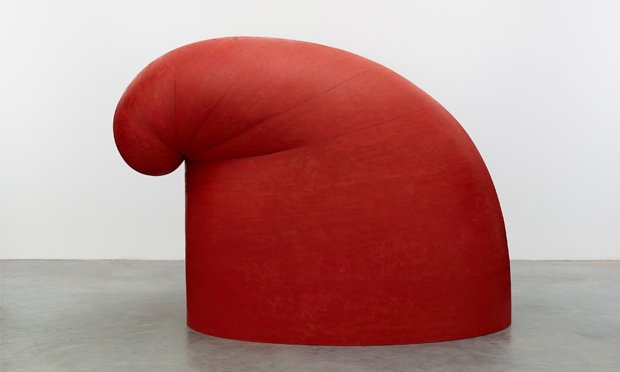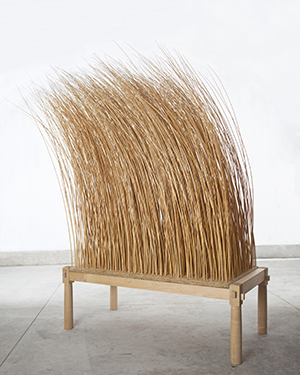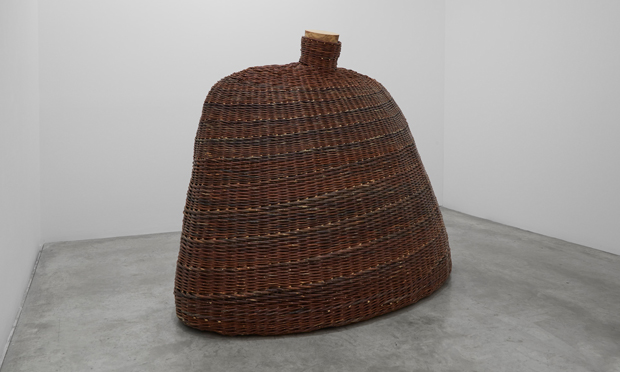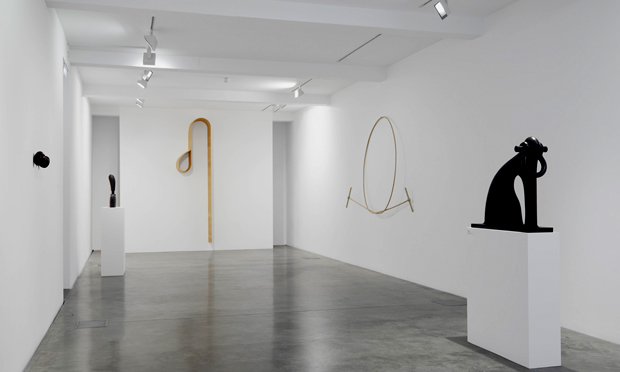Martin Puryear @ Parasol Unit, exhibition review: ‘slavery’s tumour-like presence’

“I too am free”: Martin Puryear’s Big Phrygian (2010 – 2014). Photograph by Ron Amstutz.
© Martin Puryear, courtesy Matthew Marks Gallery
Martin Puryear, 76-year-old American artist and careful reader of black history, rarely holds court on the meaning and political resonance of his work. His artworks often consist of one or two materials, curvatures smoothed to perfection, in service of an object or even just a shape: hardly the hallmarks of polemical art.
Yet when confronted by the first two giant works, Night Watch (2011) and Le Prix (2005), my mind does turn to slavery, and its tumour-like presence as American history’s defining horror. Freedom is real, and tangible, the stalks of maple and willow bending together in the wind, yet you are never out of sight of the latter work’s dangling chains, le prix, the price. Wow, did Martin Puryear predict the current situation with Trump and the NFL?

Night Watch (2011) by Martin Puryear. Photograph by Christian David Erroi.
© Martin Puryear, courtesy Matthew Marks Gallery
Alright, that last bit is a stretch – maybe this is just me. After all, there’s plenty of other affecting qualities to Puryear’s work, on show at Parasol Unit (just off City Road) until 6 December.
There is a strange shift of perspective when gazing at Puryear’s monoliths – you’re not so much overwhelmed as you are dwarfed and transfixed. (Perhaps the detailed lithograph at the galleries’ entrance is the curators’ attempt to prepare you for this feeling.)
Each of these pieces has the overwhelming size and sheer craftsmanship to make a lasting impression. For example, Happy Jack (1993/2011) – with its big, ebullient, chest-like heft, made from light materials like cork and pine – is as joyous as that title suggests.
Big Phrygian (2010 – 2014) reaches back even further into history than the 1800s, with its vivid depiction of a bright red Phrygian cap. A symbol of popular liberty, its red colour dates it back to the French Revolution. (Indeed, Puryear was delighted to find an Jean-Louis Darcis engraving of a Phrygian-capped black man dating from 1794, which read in French “I too am free.”)

‘Ebullient’: Happy Jack by Martin Puryear. © Martin Puryear, courtesy Matthew Marks Gallery
Yet to me, the themes of antebellum struggle and cartoonish oppression are present in most of these larger works. The Load (2012) hurls the viewer’s reflected image up onto the back of a cart, and into the confines of a latticed wooden cage. One untitled piece looks like a respectable ladies’ hat or other such lacy garment from afar, but up close it’s mangled metal, wiry and harsh, blackened with tar.
Once through this room of monuments, on the terrace we find Question (2010) which gets more impressive the closer you get, its bold black bronze lines arcing at you as if from a giant pen.
The upstairs gallery is a smaller and more meditative collection, with cerulean rings and cedar swirls demonstrating his mastery of age-old woodworking techniques. And yet there are still gnarled effigies of struggle, such as the anxious forms of Untitled (1994) and Shackled (2014; pointedly made from iron, a rarity in Puryear’s work.)

Shackled (second from left) and Untitled (far-right) on show at Parasol Unit. Photograph: Benjamin Westoby
The Tate Modern recently included a similarly dark piece – called Self – in its Soul of a Nation: Art in the Age of Black Power exhibition (which is still running). The Guardian called it a “tragic hump”, and while there are complexities at play throughout this exhibition, Puryear is at his most political in these sort of works.
The final room’s woodcuts make an explicit link between Puryear’s Chicago and D.C. roots and the Harlem Renaissance modernism of Jean Toomer’s outstanding 1923 story-cycle Cane. (Indeed he made the images for a special edition of Cane.)
The book is a sometimes bizarre work that summons up a mixture of unease, spirit and awe-inspiring beauty – the same tones that Puryear brings to the Parasol Unit.
